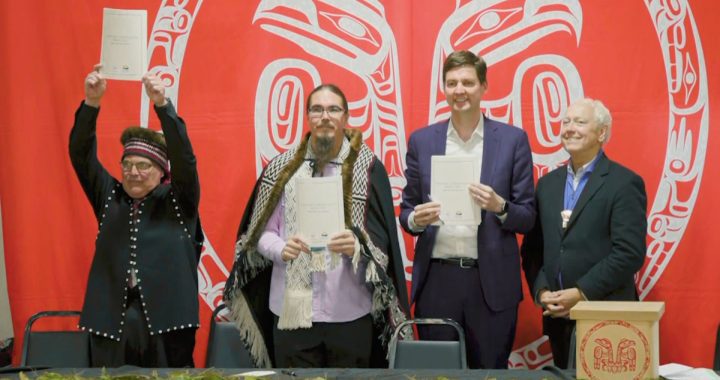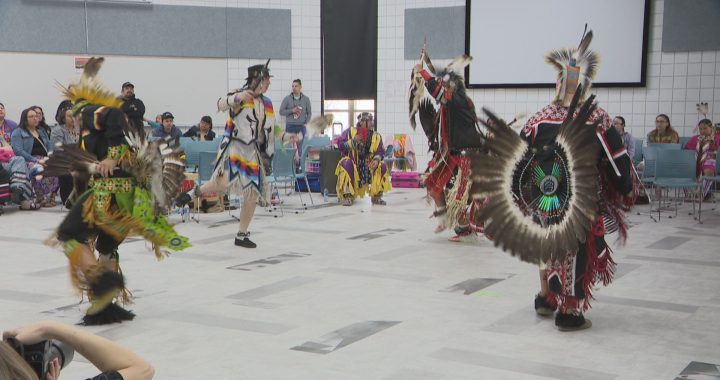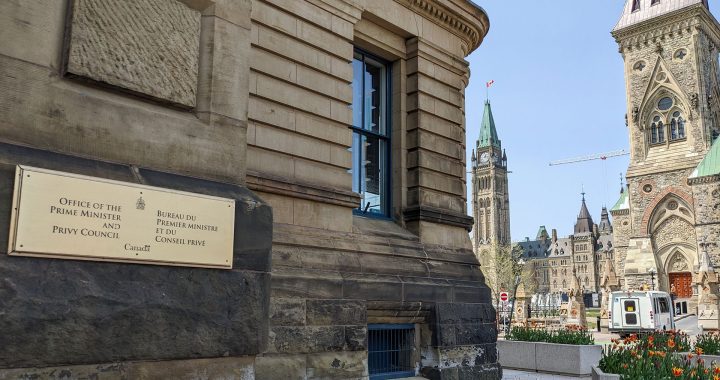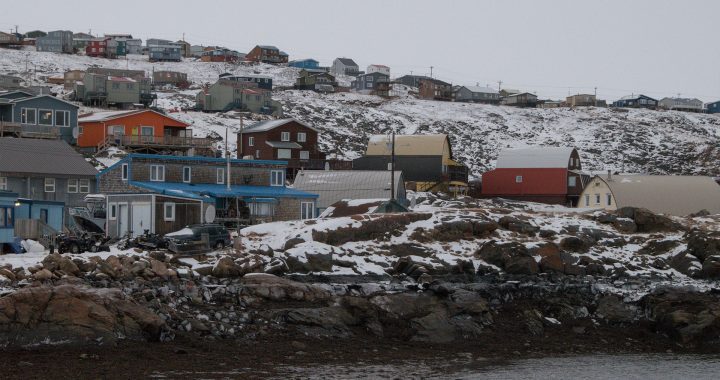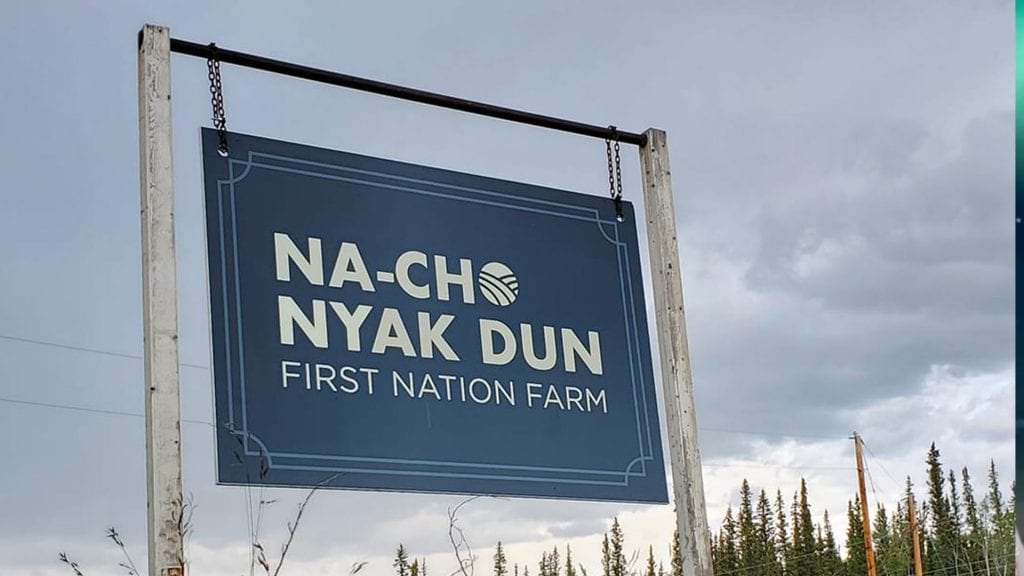
A new sign shows off the Na-Cho Nyäk Dun First Nation Farm in Dawson, Yukon. Photo: Facebook
A First Nation’s farm in the Yukon is preparing for new infrastructure that will make it a go-to destination for farmers in the central part of the northern territory.
The Na-Cho Nyak Dun, which won the $485,000 Arctic Inspiration Prize for its Indigenous Food Sovereignty Hub concept in February, is investing some of its prize money to build a slaughterhouse.
“A lot of the money will go into our abattoir,” says Sonny Gray, CEO of North Star Agriculture, a contractor to the farm.
“Right now, we have equipment that we need to order, (like) slaughter equipment.”
The prize was awarded to “plan, design, and build a multi-building food processing facility via a community training and mentorship program that provides individuals with on-the-job training.”

Gray says the focus is on getting the abattoir up to code to begin slaughter operations in the late summer or fall.
He adds the abattoir is big enough to slaughter both red and white meat, and will be the only permanent, year-round abattoir in central Yukon.
Presently farmers have to travel to Whitehorse or use the territorial government’s mobile abattoir that only travels to rural communities a few times in the summer, making the permanent abattoir more convenient.
Gray says there are also plans to add a commercial kitchen onto the building.
“We’ve seen it happen and work successfully in Whitehorse with these various small food-based companies that started out in someone’s kitchen, and then the next thing you know it’s kind of taken off.”

Gray says there’s a potential for offering trades programming at the slaughterhouse, as well.
Other program options include gardening, livestock management, nutrition, culinary arts, and band members working at the farm as a form of healing and wellness.
The 320-acre farm is located within Na-Cho Nyäk Dun First Nation traditional territory, about 40 minutes outside Mayo, and was formerly known as Partridge Creek Farm. The First Nation is about 405-km north of Whitehorse.
The farm was purchased in 2018 as a way to provide food security to its citizens as well as relieve pressure off traditional food sources like moose.
Chief Simon Meryvn says “it’s clear that 20 years from now (traditional foods are) going to be depleted.”

Mervyn also remembers when the highway washed out in 2012, leaving grocery store shelves bare.
“The stores were just cleaned right out in a matter of hours in Whitehorse and local communities,” he says.
“Now people are saying, ‘Pay attention. Look ahead. Plan forward.’”
The farm went into operation last year with help of North Star.
North Star will continue to help the farm get established for a few more years before completely turning it over to Na-Cho Nyak Dun First Nation citizens.
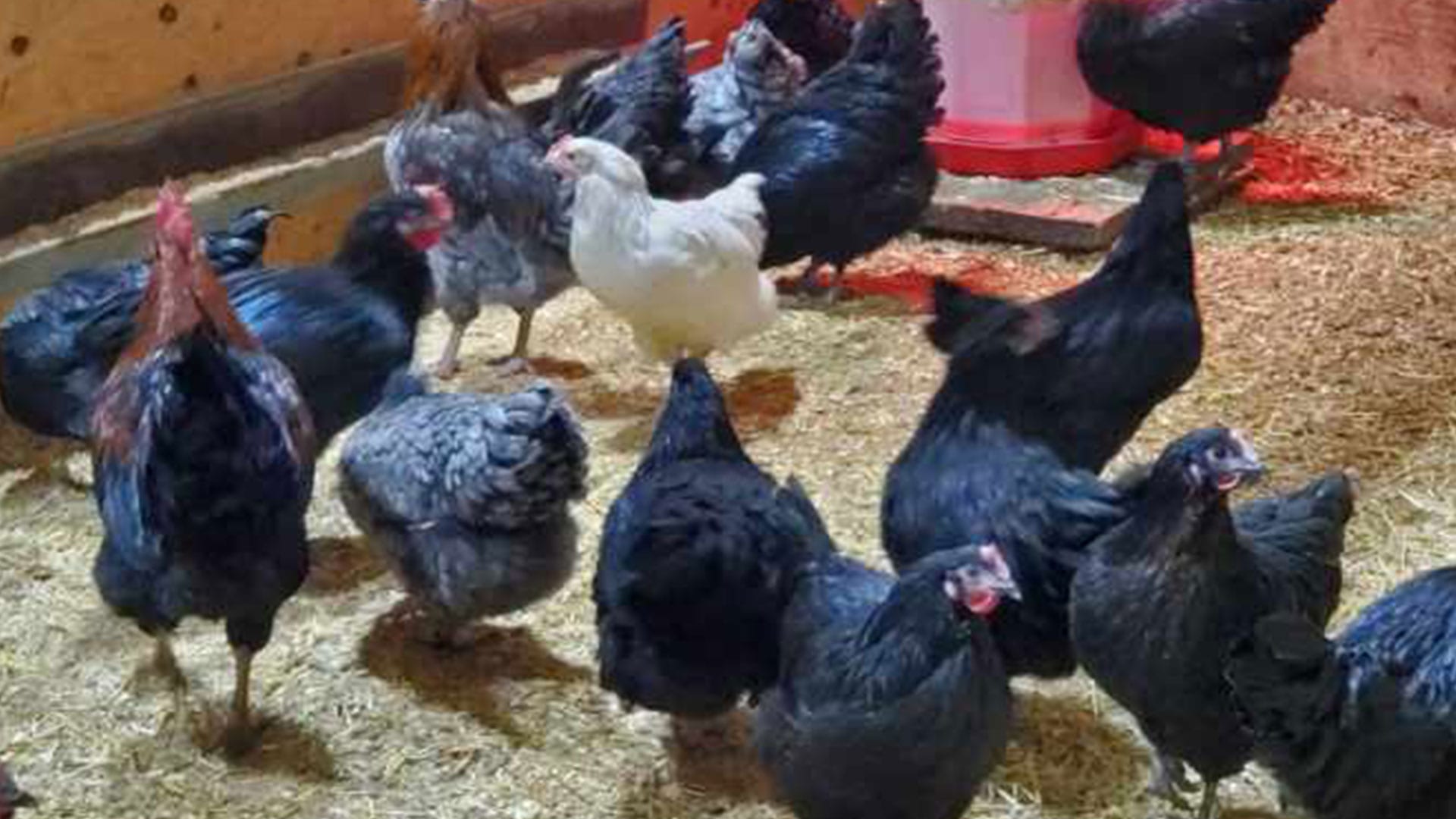
One building on the property is being used as a makeshift greenhouse to grow produce like tomatoes, carrots and potatoes.
There is also a large barn where chickens, pigs and rabbits are bred for meat.
A former abattoir has sat empty on the property for several years.
Gray says this is exciting for the First Nation, as many of its citizens haven’t been exposed to farming or agriculture.
He says an elder on a recent farm tour had the opportunity to hold a chick.

“I was like, man, look at the difference we’ve already made because we have an elder here and in her entire lifetime she’s never held a chick. Now, when these kids come from school they’ve held a chick. So that’s cool,” he says.
Meryvn says other northern First Nations have reached out to his community to learn more about becoming food sovereigns.
“Our brothers and sisters up north, they’re all feeling the same pressures that we’re facing,” he says.
Gray is hopeful the farm will spark an interest in agriculture for the next generation of his community.
“It’s important that we teach our kids where their food comes from and that a career in food production is a viable career, and there’s nothing to be ashamed of about being a farmer,” he says.
“Giving the children an option, making this place accessible, having summer camps here – that sort of thing. Just basically ingraining in them that this is theirs, this is their inheritance.”






